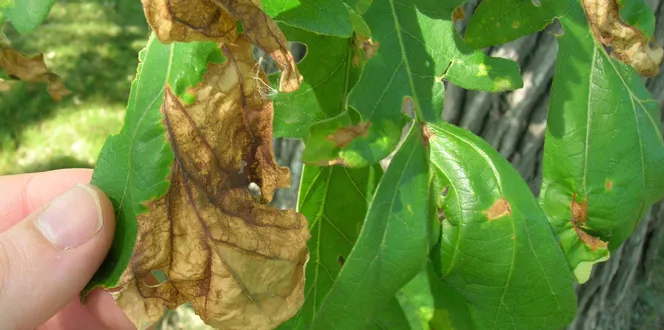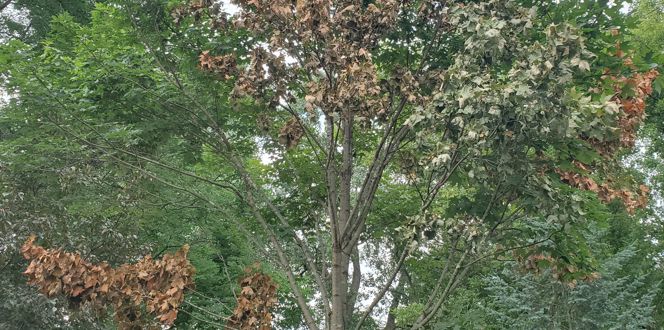Gorgeous leaves are the hallmark of Japanese maple trees–until they’re suddenly not!
“My Japanese maple looks really sick and not as full as usual. Leaves fell a lot, and they are all spotted. Is this because we received so much rain in the past several weeks/months? What do I need to do?” asked Linda from North Carolina.
Below, find out some of the reasons why Japanese maple leaves or trunks develop spots.
Why are there spots, powder or a fungus on Japanese maple leaves?
See brown spots on Japanese maple leave?
If you see circular, brown spots on Japanese maple tree leaves, it’s likely a leaf fungus called leaf spot. Or if the spots are more free-form, that could be anthracnose, another common leaf disease.
For some trees, leaf spot and anthracnose can mean a few dots on leaves here and there. In more severe cases, like Linda's, trees may drop leaves prematurely.
See white spots or patches on Japanese maple leaves?
That’s likely powdery mildew. As the name suggests, powdery mildew causes dusty growth on the top of tree leaves. Like leaf spot and anthracnose, the worst-case scenario is defoliation.
What if those white spots are on the trunk, too?
Lichens look like fuzzy patches on tree trunks. They're typically found on slow-growing trees like the Japanese maple, so spotting them shouldn't be a cause for concern.
How can I get rid of these Japanese maple leaf issues? Should I use a fungicide?
Japanese maple leaf problems may look like trouble, but that’s about it! Typically, they don’t affect your tree’s health.
Plus, you’ll be happy to know leaf spot, anthracnose and powdery mildew can be cleared in a few steps.
First:
- Avoid getting water directly on tree leaves (by overhead irrigation) because fungi thrive in wet conditions.
- If your tree does need a spritz, water in the morning, so they have the whole day to dry.
Then:
- Rake up infected leaves in the fall until the tree's bed is completely clear.
- Bag 'em and send them off with your garbage collection. Don’t compost, or you risk spreading the fungus spores all over your yard.
- If any branches or limbs look dead, prune those out using proper pruning cuts.
- Fungicides aren't necessary for leaf problems. If you want the extra safety net, your arborist can recommend treatment.





